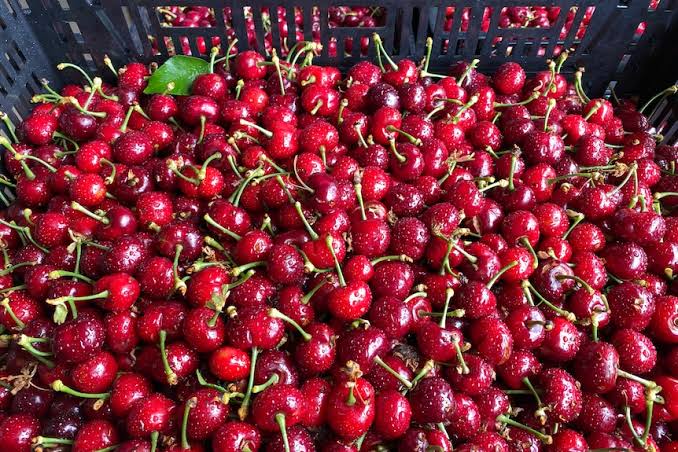Suliman Seith:
As the soft hues of pink and white begin to dot the landscape of North Kashmir, there’s a palpable sense of anticipation and hope among the orchardists and laborers. The cherry trees, standing in neat rows, are not just plants; they are the pillars of an economy that thrives on the delicate balance of nature and human endeavor. The cherry harvest season in Kashmir is more than an agricultural milestone; it’s a cultural and economic festival that paints the region with prosperity and promise.
The cherry harvest typically commences in late May, with the region’s unique climatic conditions providing the perfect environment for cherries to flourish. The higher altitudes of Nishat, Harwan, Lar, Dara, and Kangan become bustling hubs of activity, as the orchards come alive with the chatter of workers and the clinking of ladders against the branches. The cherries, plump and vibrant, are a testament to the region’s horticultural prowess.
Economically, the cherry harvest is a boon for the local community. It provides employment opportunities not just for the orchard owners but also for the seasonal laborers who migrate from various parts of the region to partake in the harvest. This migration is a crucial aspect of the local economy, as it supports ancillary businesses such as transportation, food supply, and temporary lodging.
The introduction of new cherry varieties by horticulturists has been a game-changer for the industry. These varieties, which require less effort to grow and yield superior results, have enabled orchardists to increase their productivity and profitability. The traditional varieties like Avval, Italy, Mishry, Makhmaly, Double, and Hybrid continue to be popular, but the new breeds are fast gaining ground for their resilience and quality.
The cherry harvest is not without its challenges, though. Climate change poses a significant threat to the predictability of the seasons, which can affect the flowering and fruiting cycles of the trees. Moreover, the political instability in the region can sometimes disrupt the smooth functioning of the harvest season. Despite these hurdles, the cherry harvest continues to be a symbol of hope and resilience for the people of North Kashmir.
The government and private sector have roles to play in ensuring the sustainability of this vital industry. Investment in research and development of hardier cherry varieties, improved irrigation systems, and better market access for the farmers can go a long way in bolstering the cherry harvest. Additionally, promoting the cherries of Kashmir as a premium product in national and international markets can enhance the region’s reputation as a producer of high-quality fruits.
In conclusion, the cherry harvest in North Kashmir is not just an agricultural activity; it’s a lifeline for many and a source of regional pride. With the right support and investment, the cherry industry can continue to thrive and contribute significantly to the economy of Kashmir. As the cherries bloom and the orchards buzz with activity, one can’t help but be optimistic about the future of this picturesque and productive region.




